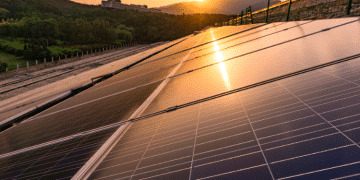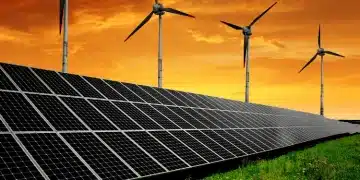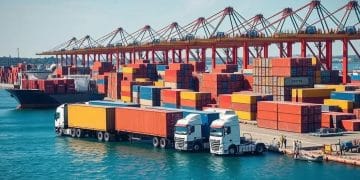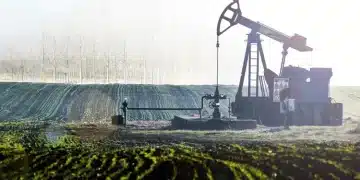A Complete Guide to South Africa’s Economic Challenges: From Energy Crisis to Structural Transformation
Current Economic Landscape
GDP Growth Deceleration
The economic growth in South Africa has significantly slowed down, with the GDP growth rate falling to a mere 0.6% in 2023 from 1.9% in 2022.
This deceleration is mostly attributed to persistent challenges in the electricity supply, constraints in the transport sector, and a drop in international prices for key exports such as gold and platinum group metals.
These issues have led to notable contractions in important sectors of the economy.
Agriculture experienced a 3.2% decline, whereas the mining sector saw a 1.6% reduction.
In contrast, the manufacturing sector showed a slight increase of 0.2%, spurred by higher demand for petrochemicals and vehicles.
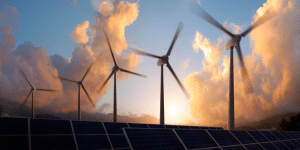
Impact of Electricity Shortages and Transport Constraints
Electricity shortages have had severe repercussions on South Africa’s economic activities.
The country’s ongoing energy crisis has prompted frequent power outages, which disrupt production and increase operational costs for businesses.
These power interruptions have an extensive impact on all sectors, especially those heavily reliant on consistent energy supply, such as manufacturing and mining.
The transport sector, burdened by significant bottlenecks, has further exacerbated the situation.
Congested ports and an inefficient rail system have impeded trade flows, leading to delays and increased costs for businesses dependent on import and export activities.
The inadequacies of the transport infrastructure, coupled with energy supply issues, are substantial obstacles to economic progress.
Inflation Trends and Currency Performance
Inflation in South Africa eased slightly in 2023, dropping to 6.0% from 6.9% in 2022, primarily due to lower international fuel prices.
However, higher interest rates have weighed on household consumption, which plummeted from 2.8% in 2022 to 0.7% in 2023.
The South African rand has struggled against the US dollar, depreciating by 12.4% in 2023, and standing at 18.40 rand to the dollar.
This depreciation is driven by declining terms of trade for South Africa’s primary export goods and has led to a widened current account deficit, moving from 0.5% of GDP in 2022 to 1.6% in 2023.
This currency weakness increases the cost of imports, putting further strain on the economy.
South Africa’s economic landscape underscores the urgency of tackling the fundamental issues of infrastructure and stabilizing critical sectors to pave the way for sustainable growth.
Critical Infrastructure Challenges
Persistent Electricity Supply Shortages and Their Economic Implications
South Africa’s prolonged electricity supply shortages have severely impacted its economic landscape.
Eskom, the state-owned power utility, struggles to meet the national demand due to aging infrastructure, financial woes, and operational inefficiencies.
These power interruptions cause significant disruptions across various sectors.
Firms face increased operational costs as they resort to alternative power sources, which are often expensive and less efficient.
The manufacturing sector, especially energy-intensive industries such as mining and metal production, is heavily hit, leading to reduced output and job losses.
Small and medium enterprises (SMEs) are also affected since they lack the capital reserves to weather frequent outages.
The broader economic implications include reduced investor confidence and a slowdown in overall economic growth, as evidenced by the GDP deceleration to 0.6% in 2023.
Transport Sector Bottlenecks Affecting Trade and Commerce
Another critical challenge is the transport sector bottlenecks.
South Africa’s transport infrastructure, encompassing roads, railways, and ports, suffers from underinvestment, inefficiencies, and mismanagement.
These issues hinder the free flow of goods within the country and to international markets.
Congested ports, frequent rail service disruptions, and poor road conditions have led to substantial delays and increased logistics costs for businesses.
This particularly affects the agricultural and manufacturing sectors, reducing their competitiveness in global markets.
Effective transport is vital for economic activities, yet current constraints threaten to stifle trade and commerce, further aggravating the country’s economic woes.
State-Owned Enterprises’ Performance and Financial Burden on the Economy
State-owned enterprises (SOEs) form another significant hurdle. Key SOEs, including Eskom and Transnet (transport and logistics), are plagued by inefficiencies, corruption, and financial mismanagement.
Instead of being engines of growth, these entities have become economic burdens.
The government frequently bails them out, diverting funds from other critical areas such as healthcare, education, and infrastructure development.
For instance, Eskom’s recurring bailouts drain fiscal resources, contributing to the persistent fiscal deficit.
Additionally, the financial instability of these enterprises undermines investor confidence, deterring foreign and domestic investments critical for economic recovery and growth.
Addressing these critical infrastructure challenges requires comprehensive reforms, effective management, and a robust public-private partnerships framework.
These steps are essential to revitalize South Africa’s infrastructure, catalyze economic growth, and create a more resilient economy.
| Scenario | Before | After (Current Situation) |
|---|---|---|
| 📉 Poverty | Low poverty rate | 21.6% poverty rate, with a significant proportion living below the poverty line |
| 💰 Income Inequality | Moderate income disparity | Gini coefficient of 0.63, reflecting high income inequality |
| 📉 Unemployment | Moderate unemployment rate | 32.1% unemployment rate overall, with youth unemployment at 39% |
| 🌍 Global Inequality Ranking | Lower inequality ranking | Ranked among the top 10 most unequal countries globally |
Structural Economic Transformation
Services Sector Expansion
South Africa’s economy has witnessed a significant transformation, highlighted by the expansion of the services sector.
In 2022, the services sector accounted for 62.6% of GDP, a dramatic rise from 51.3% in 1990.
This growth has been propelled by sectors like financial services, real estate, and transport, playing a crucial role in anchoring the nation’s economic landscape.
However, this expansion has not translated into substantial job creation, especially for the low-skilled labor force, creating an imbalance.
While these sectors generate substantial revenue, they often demand higher skilled labor, leaving a large segment of the population unemployed or underemployed.
Industrial Sector Decline
The industrial sector, once a backbone of economic productivity, has seen its contribution dwindle.
In 1990, the industrial sector contributed 36% to GDP, but by 2023, this figure sharply declined to 25%.
A particularly concerning aspect of this decline is seen in the manufacturing sector.
Once contributing 24% to GDP in 1990, manufacturing now stands at a mere 12%.
This sector, crucial for job creation and export growth, faces challenges such as outdated infrastructure, high production costs, and global competition.
Manufacturing and Agricultural Challenges
Manufacturing’s decline is paralleled by significant challenges in the agricultural sector.
Although agriculture’s contribution to GDP has remained static at about 13% over the years, it is not immune to the broader economic difficulties.
Both sectors are struggling with an uncertain business environment, erratic electricity supply, and logistical constraints.
These issues hamper productivity, reduce export competitiveness, and ultimately impede economic stability.
By transforming its economic structure, South Africa aims to foster resilience and inclusivity.
This requires addressing the inherent challenges within its manufacturing and agricultural sectors and leveraging the growing services sector to create more inclusive job opportunities.
The next step calls for strategic investments and policy reforms to unlock the full potential of the economy.
Future Outlook and Recovery Strategies
Projected GDP Growth Rates for 2024-2025 and Contributing Factors
South Africa’s economic outlook has shown signs of cautious optimism, with GDP growth expected to rebound to 1.3% in 2024 and further to 1.6% in 2025.
This growth projection is driven by strategic investments, particularly in infrastructure that will bolster the construction sector and revive other critical areas.
The focus on remedying the persistent electricity shortages, improving transport logistics, and stimulating both public and private sector investments are key components of this projected economic recovery.
Role of Public-Private Partnerships in Infrastructure Development
Public-private partnerships (PPPs) are instrumental in addressing South Africa’s infrastructure deficits.
Given the challenges in the energy sector and transport bottlenecks, PPPs can leverage private capital and expertise to enhance public infrastructure efficiently.
These collaborations aim to upgrade power generation capabilities, improve road networks, and modernize ports, thereby reducing the economic drag caused by outdated and insufficient infrastructure.
Importance of Financial Market Reforms and Investment Stimulation
Reforms in the financial market are crucial for stimulating broader economic growth.
Deepening financial markets improves access to credit and other financial products, crucial for small and medium enterprises (SMEs) that drive job creation.
Enhancing financial stability and resilience through better regulatory frameworks and fostering a conducive investment environment is key.
This includes tackling high-risk areas such as non-performing loans and ensuring better capital adequacy ratios.
By systematically addressing these areas, South Africa can lay a foundation for sustainable and inclusive growth.
The transformation of financial markets combined with strategic infrastructure investments will be pivotal in overcoming existing economic disparities and stimulating robust economic activities.
Risk Factors and Mitigation Measures
Impact of Upcoming 2024 General Elections on Investor Confidence
The 2024 general elections in South Africa present a considerable risk to investor confidence.
As political events often bring uncertainty, the forthcoming elections could trigger apprehensiveness among both local and international investors.
Historically, elections have been accompanied by volatile market reactions, and any political instability or policy changes can undermine investor sentiment.
Regulatory uncertainties and potential shifts in governmental priorities post-elections might further exacerbate this.
Therefore, maintaining transparency and consistent economic policies is vital to reassure investors during this period.
Vulnerabilities Related to Commodity Price Volatility and Climate Change
South Africa’s economic stability is highly susceptible to global commodity price fluctuations.
The country’s reliance on mineral exports like gold and platinum makes it vulnerable to pricing dips in international markets.
Such volatility can result in unpredictable income patterns, affecting both macroeconomic stability and the livelihood of individuals dependent on these sectors.
Additionally, climate change poses long-term risks by potentially disrupting agricultural productivity, exacerbating droughts, and increasing the frequency of extreme weather events.
These environmental challenges threaten food security and can lead to increased poverty if not addressed.
In response, it is crucial for South Africa to diversify its economic activities and incorporate robust climate resilience strategies, including investment in sustainable practices and infrastructure.
Strategies for Addressing Structural Challenges and Promoting Inclusive Growth
To address structural economic challenges and foster inclusive growth, South Africa must implement strategic interventions.
Public-private partnerships can play a significant role in advancing infrastructure development, particularly in the energy and transport sectors plagued by inefficiencies.
Partnering with private entities can help mobilize the necessary capital, enhance operational efficiencies, and ensure timely completion of crucial projects.
Furthermore, financial market reforms are crucial for economic stability.
Enhancing the regulatory framework, improving market transparency, and stimulating investment through incentives can ensure a more robust financial ecosystem.
Another key area is investing in education and skills development to bridge the gap between existing qualifications and industry needs.
This approach will prepare the workforce for the evolving economic landscape, thereby reducing unemployment—especially among the youth.
Encouraging the growth of high-employment sectors such as manufacturing and agriculture is essential.
Policies that promote industrialization, enhance agricultural productivity, and offer support to small and medium enterprises (SMEs) can generate employment opportunities and uplift economically marginalized communities.
Addressing these multifaceted challenges with targeted strategies can accelerate South Africa’s journey towards sustainable and inclusive economic growth.
As the country braces for upcoming hurdles, it is imperative to maintain a resilient economic structure that can weather political and environmental uncertainties.
This adaptive approach will ensure long-term stability and equitable prosperity.
This discussion naturally leads into considering how the potential shifts in the global economic environment, along with evolving domestic policies, might influence the economic outlook for the future.
